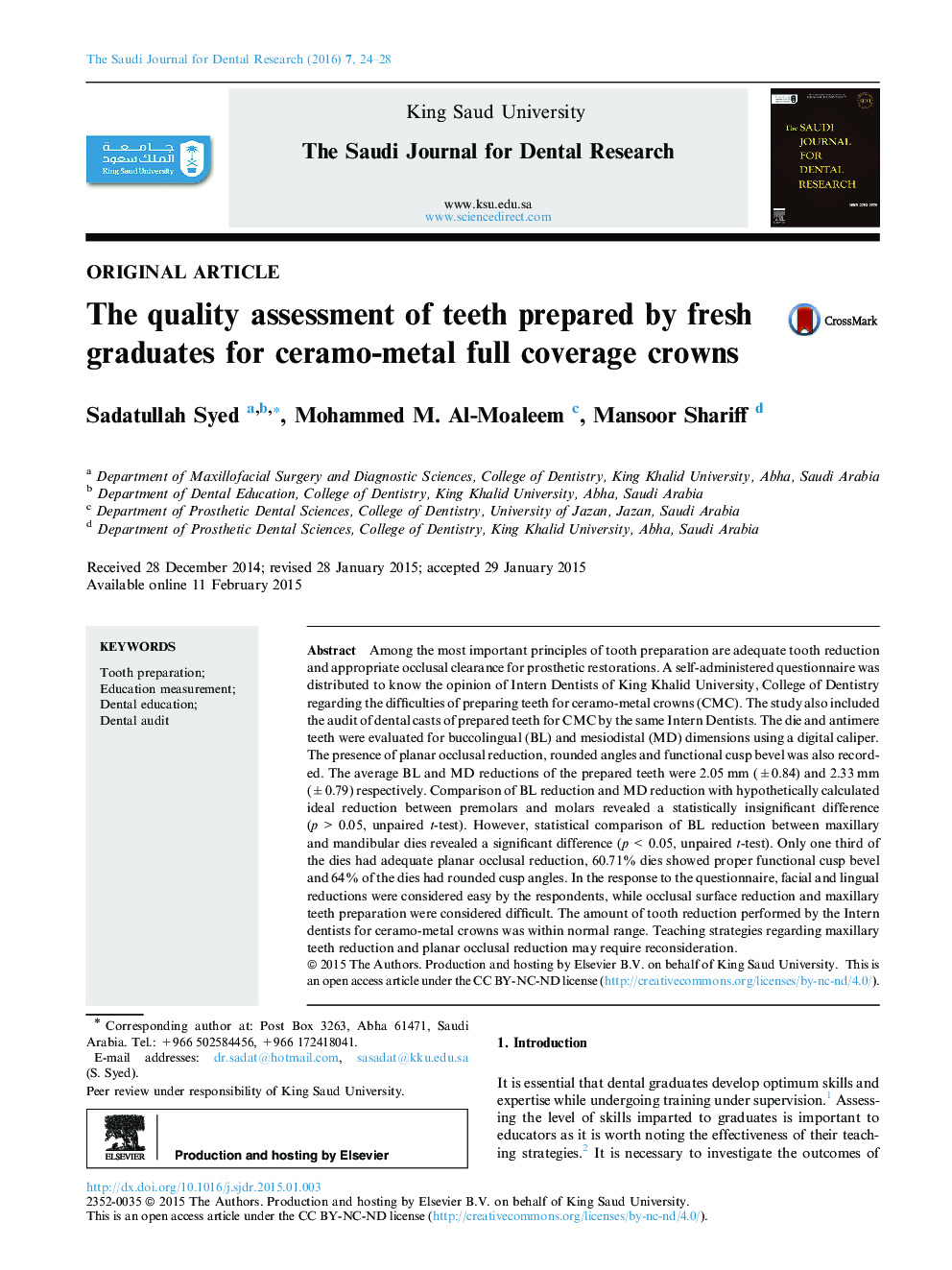| Article ID | Journal | Published Year | Pages | File Type |
|---|---|---|---|---|
| 3175216 | The Saudi Journal for Dental Research | 2016 | 5 Pages |
Among the most important principles of tooth preparation are adequate tooth reduction and appropriate occlusal clearance for prosthetic restorations. A self-administered questionnaire was distributed to know the opinion of Intern Dentists of King Khalid University, College of Dentistry regarding the difficulties of preparing teeth for ceramo-metal crowns (CMC). The study also included the audit of dental casts of prepared teeth for CMC by the same Intern Dentists. The die and antimere teeth were evaluated for buccolingual (BL) and mesiodistal (MD) dimensions using a digital caliper. The presence of planar occlusal reduction, rounded angles and functional cusp bevel was also recorded. The average BL and MD reductions of the prepared teeth were 2.05 mm (±0.84) and 2.33 mm (±0.79) respectively. Comparison of BL reduction and MD reduction with hypothetically calculated ideal reduction between premolars and molars revealed a statistically insignificant difference (p > 0.05, unpaired t-test). However, statistical comparison of BL reduction between maxillary and mandibular dies revealed a significant difference (p < 0.05, unpaired t-test). Only one third of the dies had adequate planar occlusal reduction, 60.71% dies showed proper functional cusp bevel and 64% of the dies had rounded cusp angles. In the response to the questionnaire, facial and lingual reductions were considered easy by the respondents, while occlusal surface reduction and maxillary teeth preparation were considered difficult. The amount of tooth reduction performed by the Intern dentists for ceramo-metal crowns was within normal range. Teaching strategies regarding maxillary teeth reduction and planar occlusal reduction may require reconsideration.
